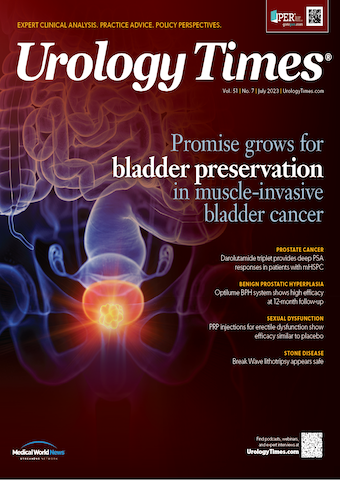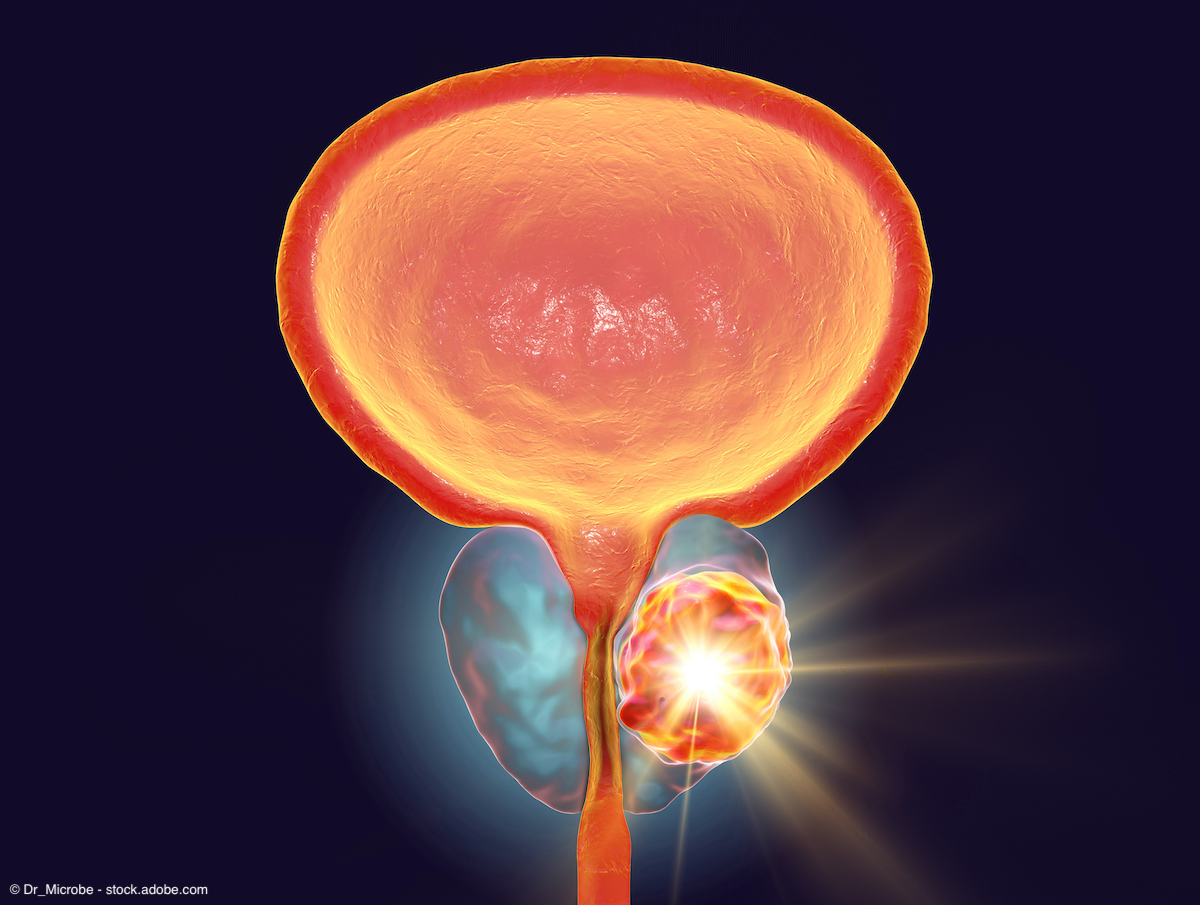Publication
Article
Urology Times Journal
Optilume BPH System shows high efficacy at 12-month follow-up
Author(s):
Treatment with the Optilume BPH System resulted in significant, immediate symptomatic and functional improvements in patients with BPH, according to 12-month datafrom the PINNACLE study presented at the 2023 AUA Annual Meeting.1
“There was also no perceived change in erectile or ejaculatory function after treatment as measured by IIEF and MSHQ-EjD,” said Steven A. Kaplan, MD.

At 1 year, IPSS score was decreased by a median of 11.5 in the Optilume arm vs a median of 4.8 in the sham arm. The difference was statistically significant (P <.001). Also at 12-months, the therapeutic response rate, defined as the proportion of patients with a ≥30% improvement in IPSS, was 76.6% in the Optilume arm vs 33.3% in the control arm (P <.001).
“Patients in the Optilume arm showed an immediate and sustained improvement in IPSS over the course of 1 year, as compared to the sham arm,” said lead author Steven A. Kaplan, MD, professor of Urology at the Icahn School of Medicine at Mount Sinai in New York.
Kaplan, added, “There was also no perceived change in erectile or ejaculatory function after treatment as measured by IIEF and MSHQ-EjD.
The Optilume BPH System is a minimally invasive surgical therapy (MIST) that consists of a drug-coated balloon system. “Mechanical dilation with Optilume BPH achieves an anterior commissurotomy, while delivery of paclitaxel is intended to maintain luminal patency during healing,” explained Kaplan.
The prospective, double-blind, sham-controlled PINNACLE study enrolled 148 patients with BPH at 18 centers in the United States and Canada. Patients were randomized in a 2:1 ratio to Optilume (n = 100) or sham (n = 48). Patients were not eligible if they had received prior surgery/MIST therapy.
Patient characteristics at baseline were well balanced between the 2 study arms. In the Optilume arm, the median age at baseline was 64.5 years and the median BMI was 29.3 kg/m2. The median PSA was 2.42 ng/mL, prostate volume was 44.9 cc, and IPP size was 5.1 mm. The median IPSS score was 23.4, the median Qmax was 8.9 mL/sec, and the median post-void residual (PVR) volume was 84.1 ml.
In the sham arm, the median age at baseline was 65.5 years and the median BMI was 29.1 kg/m2. The median PSA was 2.2 ng/mL, prostate volume was 45.0 cc, and IPP size was 5.3 mm. The median IPSS score was 24.3, the median Qmax was 9.0 mL/sec, and the median PVR volume was 89.4 ml.
At 1-year, there were 89 evaluable patients in the Optilume arm and 26 evaluable patients in the Sham arm.
The average peak urinary flow rate, or Qmax, improved from 8.9 mL/sec at baseline to 19.0 mL/sec at 1 year, translating to a 113% improvement. Kaplan said this is the “highest average peak urinary flow rate (Qmax) at 12 months reported in randomized MIST trials for BPH.”
He added that, “PVR urine volume improved 28% from baseline to 30 days in the Optilume group, and this improvement was sustained through 12 months.”
In a question and answer session following his presentation, Kaplan was asked, whether he thinks Optilume could be done with a flexible scope in an office setting.
“Flexible scope? I don't think so, at least currently. Can it be done in the office? Yes. But I don’t think it’s for a flexible scope; I don’t think it’s going to happen, at least in the immediate future,” said Kaplan.
Reference
1. Kaplan SA, Moss J, Freedman S, et al. 12-month outcomes from a randomized, sham controlled study evaluating a novel drug coated balloon for the treatment of BPH. 2023 AUA Annual Meeting. April 27-May 1, 2023. Abstract PD41-03.doi: 10.1097/JU.0000000000003346.03



























